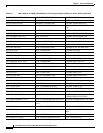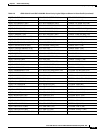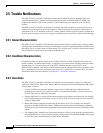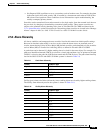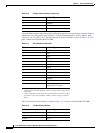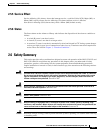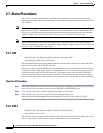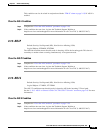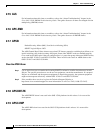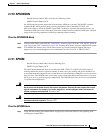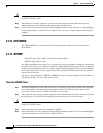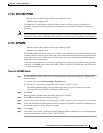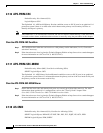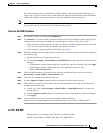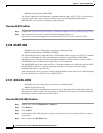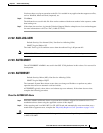
2-20
Cisco ONS 15310-CL and Cisco ONS 15310-MA Troubleshooting Guide, R7.0
Chapter 2 Alarm Troubleshooting
2.7.5 ALS
2.7.5 ALS
For information about this alarm or condition, refer to the “Alarm Troubleshooting” chapter in the
Cisco ONS 15454 DWDM Troubleshooting Guide. That guide discusses all dense wavelength division
multiplexing (DWDM) alarms.
2.7.6 APC-END
For information about this alarm or condition, refer to the “Alarm Troubleshooting” chapter in the
Cisco ONS 15454 DWDM Troubleshooting Guide. That guide discusses all DWDM alarms.
2.7.7 APSB
Default Severity: Minor (MN), Non-Service-Affecting (NSA)
SONET Logical Object: OCN
The APS Channel Byte Failure alarm occurs when LTE detects protection switching byte failure or an
invalid switching code in the incoming APS signal. Some older SONET nodes not manufactured by
Cisco send invalid APS codes if they are configured in a 1+1 protection group with newer SONET nodes,
such as the ONS 15310-CL and ONS 15310-MA. These invalid codes cause an APSB alarm on the
ONS 15310-CL and ONS 15310-MA.
Clear the APSB Alarm
Step 1 Use an optical test set to examine the incoming SONET overhead to confirm inconsistent or invalid
K bytes. For specific procedures to use the test set equipment, consult the manufacturer. If corrupted
K bytes are confirmed and the upstream equipment is functioning properly, the upstream equipment
might not interoperate effectively with the ONS 15310-CL and ONS 15310-MA.
Step 2 If the condition does not clear, log into the Technical Support Website at
http://www.cisco.com/techsupport for more information or call Cisco TAC (1-800-553-2447).
2.7.8 APSCDFLTK
The APSCDFLTK alarm is not used in the ONS 15310 platforms in this release. It is reserved for
development.
2.7.9 APSC-IMP
The APSC-IMP alarm is not used in the ONS 15310 platforms in this release. It is reserved for
development.



